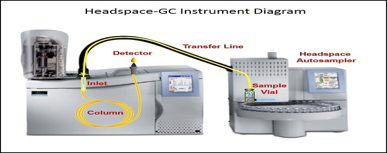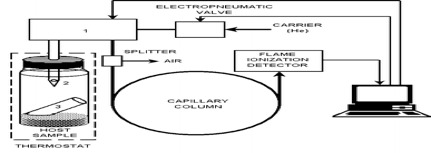Blood Defenses
Most people believe that blood test results are more reliable than breath test results; this is often not the case. Fighting a blood test case can be easier than defending a breath test case. Issues in a blood test include the following:
- Blood sample not properly taken by a qualified phlebotomist;
- Improper blood draw;
- Contamination of the blood sample;
- Utilizing a swab that contains alcohol to clean the site where the blood is drawn;
- Mistakenly obtaining the blood via an artery, and not a vein;
- Improper mixing of the blood sample with anti-coagulant and preservative
- Failure to preserve vials so that retesting is possible if needed;
- Chain of custody issues for anyone who handled the blood after it’s drawn;
- Improper storage and refrigeration of blood sample at the correct temperature;
- Mistakes with the conversion of the plasma blood test result to whole blood;
- Unsanitary lab issues;
- Improper search warrant issues in a forced blood draw;
- Expired Blood test tubes;
- Testing errors;
- Fermentation of the blood sample: fermentation can result when the blood sample is combined with microorganisms. There is NO WAY to distinguish between alcohol consumed by a subject and alcohol CREATED BY FERMENTATION.
Inherent Error Rate In Blood Alcohol Testing
Even if the maintenance and calibration of the blood testing machine are perfect, the blood test is administered exactly according to procedure, and no background or physiological factors exist that would produce false results, an inherent error still exists in blood testing. Most experts agree the inherent error rate is about +/- .01% for DUI blood testing. For example, a blood test should read 0.08% +/- 0.01%. this means you can be as high as a 0.09% or as low as 0.07%. Scientifically, that’s as good as the government’s blood testing results get and that is why many innocent people plead guilty to DUI because they are unaware of these problems with the government’s tests.
Rising Blood Alcohol Level
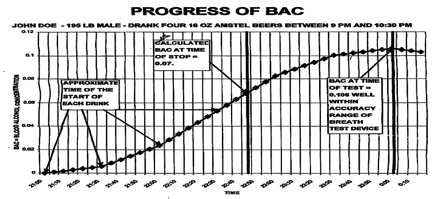
To be guilty of DUI you have to have a blood alcohol concentration over 0.08% at the time of driving. If your blood alcohol concentration is rising when you are given the chemical test, you may have been under the legal limit at the time of driving. In the above example, you could blow a 0.106% at the police station but be 0.07% BAC at the time of the stop. Why? Because your blood alcohol level can increase, 0.02% or more an hour, from the time of the stop until you took the blood test. This occurs if the DUI traffic stop occurred soon after you finished drinking. You can see that even if your BAC was above .08% when the blood draw or breath test occurred at the police station (or hospital), it may well have been below .08% when you were driving.
DUI Blood test doesn’t Directly Test your Blood
The government uses Head Space Gas Chromatography to test your blood. Your blood sample is placed in a closed sampling vessel, heated using a known temperature profile, and the vapor in the vessel is sampled for analysis. The problem is that this method doesn’t directly test your blood but indirectly tests a gas sample that is taken after a sample of your blood is split into a smaller 1ml sample, put into a sealed tube, with an alcohol standard added, and heated up. Yes, alcohol is actually added to your sample so that it can be compared to the quantity of ethanol in your sample. Since an indirect method of testing is used, there are many ways that your blood alcohol result can be wrong including improper heating of the sample, leaky forensic tubes or injection seals, improper measurement or faulty equipment during sample preparation, or improper equipment settings during your sample run are just a few of the things that can result in an erroneous blood test result.
Chain of Custody Issues
Blood samples are often difficult to track, and can lead to serious “chain of custody” issues. If any of the links of the chain of custody are missing, the blood result may be compromised and even excluded from trial. This is a common occurrence in jurisdictions where the police don’t drop the samples off at the lab but instead send them through the mail. Chain of custody can be an issue when paramedics or nurses draw the blood sample in a medical emergency situation since they don’t usually take the forensic blood draws like a lab tech would.
Blood Testing Kits
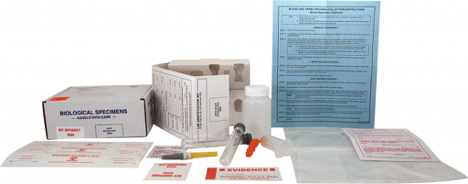
Most blood draws are taken by using a blood test kit which contains all of the items a blood draw technician needs to get a forensic blood sample including labels, instruction sheet, 2 blood draw tubes, non-alcohol swab, secure specimen box, and chain of custody sheet. Forensic issues occur when blood draw tubes and wipes are not taken from the kit or the instructions are not followed.
Title 17 Regulations – Blood Draw Requirements
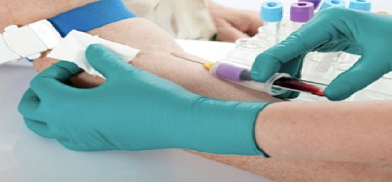
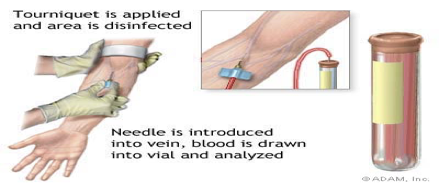
A DUI blood sample must be taken from a vein and not an artery and only authorized persons are allowed to take a forensic blood draw (CCR Title 17, Sec.1219.1(a)); No alcohol or other volatile organic disinfectant shall be used to clean the skin where a specimen is collected only aqueous benzalkonium chloride, aqueous merthiolate or other suitable aqueous disinfectant shall be used (CCR Title 17, Sec.1219.1(c)); The blood shall be mixed with an anticoagulant and a preservative (CCR Title 17, Sec.1219.1(c)(2)). These are the main legal requirements of a valid DUI blood draw. If the government can’t prove beyond a reasonable doubt that they complied with blood collection requirements, you can win because the forensic evidence is compromised.
Improper Blood Draw

The best sites to draw venous blood are the medical cubital vein, cephalic vein, and the basilic vein. Blood should not be drawn from the arm on the side of a mastectomy, edematous areas, hematomas, arm where blood is being transfused, scarred areas or sites above an IV cannula. If the blood is not drawn from the proper location, it can affect the blood result.
Preparing a non-contaminated Sample


If a blood sample is not drawn properly, it will affect the blood test result. A needle is a knife that actually cuts a small piece of skin and body matter out as it enters the body and into the vein. That is why disinfectant must be used to make sure an infection doesn’t occur and that no contaminates enter the blood sample. An improperly inserted needle will inoculate the blood sample with non-blood related body matter which can facilitate the fermentation of the blood sample.
Blood Tube Must contain the proper amount of chemicals

A proper blood collection tube has a preservative and anti-coagulant in the collection tube. If the anti-coagulant and preservative are not in the blood sample, it will comprise the blood test result. The tubes should contain a minimum of 100 mg of sodium fluoride which is the preservative and 20 mg potassium oxalate which is the anti-coagulant. In most cases, the government will not know the actual amount, if any, chemical is in the tube because they never test for preservative or anti-coagulant levels even though it is an easy and cheap test.
No Preservative – Fermentation Increases BAC
Fermentation Process
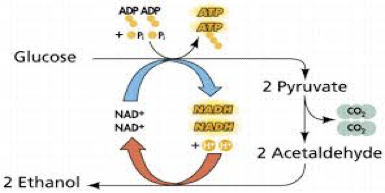
The 100 mg of sodium fluoride preservative is in the tube to prevent fermentation of the blood sample. Without preservative, fermentation of the blood sample will occur causing ethanol to actually increase in the blood collection tube. Ethanol is formed when the glucose in blood is converted by microorganisms (Candid Albicans and Saccharomyces Ellipsoideus, and others), through the process of fermentation, to alcohol. Studies show that over .20% BAC can be produced in improperly preserved and stored samples.
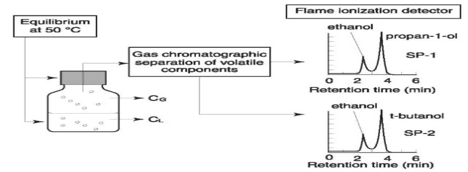
No Anti-coagulant – Bad blood test results
If the blood sample does not have an anti-coagulant, the blood test result will be unreliable. Blood clotting will affect the amount of ethanol that is released into the head space of a blood sample. Since the ethanol sample will not be in equilibrium, an erroneous test result will occur.
Salting Out Effect can increase bAC Result

The chemicals which are added to blood samples taken by police, sodium fluoride and potassium oxalate, are salts. If too much is added, or the amount of blood in the tube is less than the required amount, then the ratio of salt to blood is too high. This causes extra alcohol to enter the headspace in the blood vial. The result is an artificially high blood test result. In one example, Dr. AW Jones demonstrated that a concentration of 10 milligrams per milliliter of Sodium Fluoride in whole blood would increase the concentration of Ethanol in the head space vial by 8.9%. [Jones AW.(1983)] . The main reason a blood tube doesn’t have the required amount of blood in it is because of a bad blood draw as shown in the above slide.
Expired Blood Tubes

All blood test tubes are designed to draw 10 ml of blood via a vacuum. An expired blood tube means that the vacuum tube may no longer function as designed. If less than 10 ml of blood is drawn into the tube, an erroneous blood result may occur. Additionally, a compromised vacuum means that contaminants have entered the tube since the tube is under negative pressure (vacuum). Contaminants will affect a blood result because of fermentation.
ImProper Mixing of the Blood

When a sample is collected, it must be mixed properly immediately after the sample is drawn. This is required to mix the blood, anti-coagulant, and preservative. It must be inverted 5 to 10 times. If the sample is not mixed properly, fermentation or clotting can occur which will cause an erroneous blood result.
Hemolysis of the Blood Sample

Hemolysis is the breakage of the red blood cells membrane causing the release of hemoglobin and other internal components into the surrounding fluid. Hemolysis in a forensic sample will compromise the laboratory’s test results. When running headspace gas chromatography with flame ionization detector (HS-GC-FID), hemolysis will always produce a higher BAC result than if there was no hemolysis. The headspace technique doesn’t test the blood sample directly but instead it measures the ethanol released into the headspace. Hemolysis results in a higher concentration of ethanol in the headspace and a higher blood alcohol test result. Hemolysis is caused by using too small of a needle to draw the blood, shaking the blood tube too vigorously after collection, excess anti-coagulant, or improper transportation of the sample.
Hematocrit levels can affect BAC Results

Hematocrit is the percent of your whole blood that is made up of cellular material. If someone has a Hematocrit of 42, we are saying that 42% of their blood is made up of cellular material, and the remaining 58% is plasma which is mostly water. The normal range for a male is 40% to 54% and females 36% to 46%. The higher the hematocrit count the higher percentage of cellular material you have and the lower amount of plasma. Since alcohol will always gravitate toward the plasma, you will always have a higher BAC result with higher Hematocrit. The higher alcohol concentration results from the alcohol being contained in a lower volume of plasma. Causes of a high hematocrit include: Dehydration, heat exhaustion, low availability of oxygen, smoking, high altitude, pulmonary fibrosis, congenital heart diseases, and erythrocytosis the over-production of red blood cells by the bone marrow.
GC Testing Problems


Headspace gas chromatography (GC) is a way of separating volatile material from a liquid prior to analysis. There are many process and control issues where analyst error could affect the results. The analyst needs to ensure that the identifying information on the sample corresponds to its packaging. He or she should look for conditions that affect the reliability of the analysis, such as leaks, blood volume, clotting and signs of fermentation. A lot can happen in the lab and during subsequent steps, such as the pipetting technique used, loading of the vials into the machine, selection of parameters for the test and final interpretation of the results that can point to a tainted sample
Unequal Sample Temperature Can Cause Testing Error
The specimens and standards must be allowed to reach room temperature. Unequal temperature may lead to unequal sampling volumes. If the volume of the defendant’s blood sample is different from the known ethanol standards, then the results will be invalid. All the vials must contain the same volume of liquid for the test to work properly. The specimens should be gently inverted to assure the sample is homogenous. If the vials are vigorously shaken, this can cause bubbles in the sample which will increase the volume of the sample and lead to invalid results. The analyst must properly prepare the vials that go into the auto-sampler using a properly calibrated pipette.
Pipetting Potential for Error
Every sample is prepared by an analyst who uses a pipette to introduce a precise volume of internal standard into every vial. The manual pipetting of these solutions in such small volumes is fraught with the potential for error. The analyst must exercise extreme care in order to ensure consistent samplings of both the specimen and the internal standard. Consistency is critical to precision and reproducibility. If the pipettes are not properly calibrated, an erroneous blood test result will occur,
Coelution testing errors

Coelution is the process where two or more chemical compounds elute from a chromatographic column at the same time, making separation and identification difficult. If the alcohol analysis is done improperly, coelution can occur between ethanol and other substances including a prior ethanol test run. Coelution will result in an additive effect on the chromatogram so it will look like you have more ethanol in your sample then you actually have and this will result in an erroneously high BAC result. It important you obtain the chromatographs and underlying data from the blood test to determine if coelution or other testing errors occurred.
GC Testing Errors
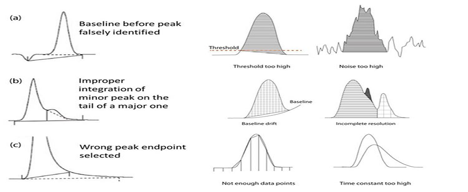
It is important to obtain the underlying data in any blood case to determine if there were testing errors. One look at a chromatogram with the above errors will indicate a serious problem with the testing in your case. Any significant testing error would make any blood test result obtained by the government wrong and subject to scientific attack for reliability.
Warrantless Blood Draw
In a blood case, a person must consent to a blood draw or the police need to get a warrant if they want to take your blood. If you do not consent and they do not get a warrant, you may be able to get the blood test result suppressed. This means the government can’t use the forensic test against you in court. In most cases, your DUI case will be dismissed. (Missouri v McNeely 133 US 1552 (2013))
Unreasonable Blood Draw
In a blood draw case, the blood draw must be reasonable. The law requires that any blood draw that exposes a person to risk, trauma or pain, and was performed in an unreasonable manner doesn’t comply with the 4th amendment. If you suffered pain, bruising, trauma or pain during the blood draw you may be able to get the blood result suppressed. In most cases, your DUI case will be dismissed. (Schmerber v California 384 US 757 (1966))
Title 17 Regulations – Breath/Blood Testing Requirements
California Code of Regulations Title 17 sets forth procedures that must be followed by the government when they administer blood tests and when they test blood samples. Since there is a high potential for inaccurate test results when proper procedures are not followed, the government mandates the procedures and protocols for forensic testing of blood samples in California. If the government can’t prove beyond a reasonable doubt that they complied with State law, you can win because the forensic evidence is compromised.
Failure To Comply With California’s Title 17 Regulations
A failure to follow the regulations can result in inaccurate alcohol test results. That is why in a California DUI case if the evidence demonstrates that the person administering the test or agency maintaining the testing device failed to follow Title 17 regulations the jury is given an instruction that states “In evaluating any test results in this case, you may consider whether or not the person administering the test or the agency maintaining the testing device followed the regulations of the California Department of Public Health [Title 17].” The most important sections relevant to DUI testing are as follows:
California Code of Regulation 1215.1
(d) “Concentration” means the weight amount of alcohol contained in a unit volume of liquid or
a unit volume of gas under specified conditions of temperature and pressure; in the case of a
solid tissue specimen, “concentration” means the weight amount of alcohol contained in a unit
weight of specimen.
1219.1. Blood Collection and Retention
(a) Blood samples shall be collected by venipuncture from living individuals as soon as feasible
after an alleged offense and only by persons authorized by Section 13354 of the Vehicle Code.
(b) Sufficient blood shall be collected to permit duplicate determinations.
(c) Alcohol or other volatile organic disinfectant shall not be used to clean the skin where a
specimen is to be collected. Aqueous benzalkonium chloride (zephiran), aqueous merthiolate or
other suitable aqueous disinfectant shall be used.
(d) Blood samples shall be collected using sterile, dry hypodermic needles and syringes, or using
clean, dry vacuum type containers with sterile needles. Reusable equipment, if used, shall not be
cleaned or kept in alcohol or other volatile organic solvent.
(e) The blood sample shall be deposited into a clean, dry container which is closed with an inert
stopper.
(1) Alcohol or other volatile organic solvent shall not be used to clean the container.
(2) The blood shall be mixed with an anticoagulant and a preservative.
(g) In order to allow for analysis by the defendant, the remaining portion of the sample shall be
retained for one year after the date of collection.
(2) Whenever a sample is requested by the defendant for analysis and a sufficient sample
remains, the forensic alcohol laboratory or law enforcement agency in possession of the original
sample shall continue such possession, but shall provide the defendant with a portion of the
remaining sample in a clean container together with a copy

